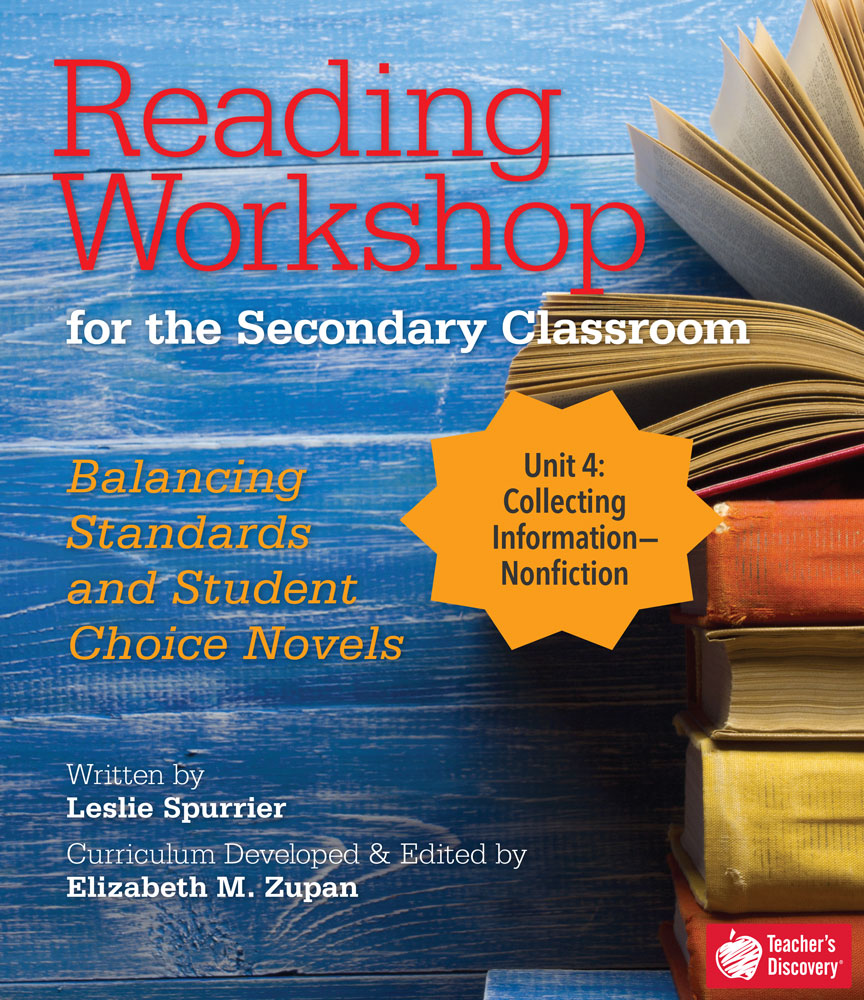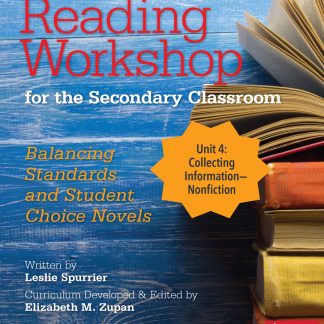Description
The complete fourth unit of Reading Workshop for the Secondary Classroom. Lessons, handouts, and activities provide you with everything you need to teach the unit. All lessons apply to any book your students may choose to read. All lessons are CCSS-aligned.Unit 4: Part of a Whole–Story ElementsNonfiction gets a bad rap.As we develop a love of reading in our students, let us not forget the importance and place of nonfiction. Extending beyond textbooks, manuals, and newspaper articles, nonfiction satisfies readers’ hunger to understand the world around them in a way that perhaps feels more credible than a fictitious story. Moreover, reading nonfiction develops a sound base of background knowledge in students and prepares them for more complex texts that become the foundation of reading in both higher education and the professional work force.This unit aims to formally introduce students to nonfiction text, equipping them with the skills necessary to do more than just skim, scan, and look for important ideas. By covering text features, text structure, content validity, and more, the unit lays the groundwork on which to build an understanding of nonfiction.Lesson Sequenceol 1. Get the Lay of the Land–Identifying and Using Text Features 2. Sneak Preview–Activating Prior Knowledge 3. Digging for the Point–Identifying and Using Text Structure 4. The Perfect Pick II–Learning How to Choose a Nonfiction Text 5. Deciphering the Code–Finding the Central Idea and Using Support 6. Good for the Digestion–Personally Reflecting on Information 7. Digging for the Truth–Examining the Author 8. Finding Fakes–Examining Credibility and Reliability 9. Mark It Up–Learning to Annotate/olspan style=”color:#FF0000;”Download the FREE sample lesson located in “Additional Info.”/spanCopyright 2019. Middle school, high school. Reproducible. PDF download, 90 pages. Adobe Reader required to view.img alt=”” src=”//aedownload.net/teachersdiscovery/images/Author_Leslie_Spurrier.jpg” style=”float: left; border-width: 0px; border-style: solid; margin: 0px 6px; height: 140px; padding-right: 10px;” /About the AuthorLeslie Spurrier/ holds a bachelor’s degree in English from Wake Forest University and a master’s degree in Reading and Language Arts from Millersville University. She taught middle school English and reading for over seven years and lived to tell the tale. Her favorite literary character of all time is Anne Shirley, which made giving birth to a red-headed little girl all the more glorious. Leslie currently resides in Lititz, PA, with her husband and two children. When she’s not voraciously devouring books of all sorts, she creates educational materials for her online business, Story Trekker, and desperately tries to keep her cat Shadow from scratching up her favorite chair.




